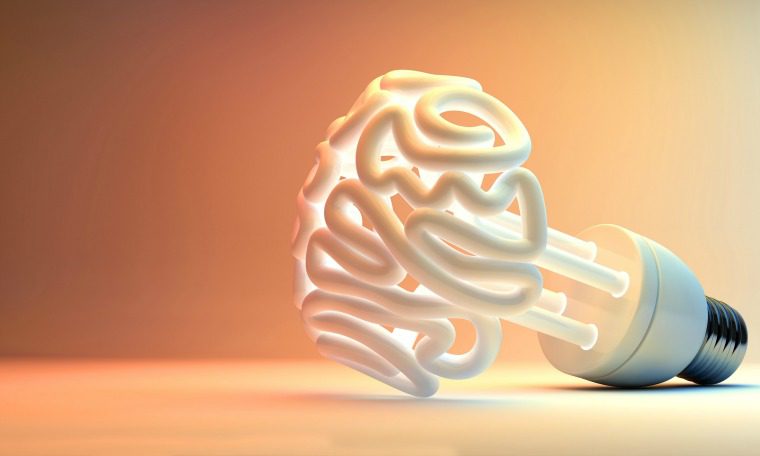The best talent is almost always deeply engaged and incredibly productive. Wouldn’t it be great if learning leaders could “clone” those people? Well, they can.
There are two parts to being able to clone your people: the ability to reverse engineer the top performers to really understand what makes them extraordinary, and the ability to quickly and efficiently develop others to think and act like those top performers.
Self-discovery allows an organization to quickly and effectively reverse engineer top performers. Self-directed learning, based on advances in neuroscience, enables an organization to quickly develop everyone to be like the best.
We began with a question that can be quite difficult to answer: “How do top performers actually become top performers?” As with trying to reverse engineer top performers, there was neither good information nor robust methodologies on how to develop lesser performers into top performers.
The closest answer is that experts spend 10,000 hours working to become an expert, with no definition of what that work meant. Ten thousand hours of unfocused learning was hardly going to meet our requirements. Fortunately, starting about 2005, the emerging neuroscience of learning suggested a way to solve this problem.
Neuroscience showed the basic building block of all learning is the rewiring of neurons into new patterns. What causes neurons to rewire? The scientific saying is “neurons that fire together wire together.” Firing together means a sufficient number and depth of meaningful experiences around a defined set of attitudes and behaviors cause the brain to rewire — or learn — the new patterns. Once rewired, these patterns are the new unconscious competence.
But what experiences cause the brain to rewire and, most critically, how do you get non-top performers to want to become top performers enough to do the practice required to rewire their neurons? Let’s answer the second question first. Here again the breakthrough came from neuroscience. The science shows that certain types of images and actions cause neural changes that drive our attitudes and behaviors. When someone feels they are making a contribution to a greater social good for family, teammates, the organization and/or society, their brain releases endorphins and dopamine — called a dopamine squirt — which make them feel great and more receptive to new ideas.
Similarly, if a person writes down their greater purpose, the act of writing suppresses portions of the brain associated with fear and resistance to change and stimulates portions of the brain associated with a sense of greater control, also making them more open to new ideas. Finally, if all of this is done with others in some sort of social group, other neurochemicals — serotonin and oxytocin — are released that cause people to want to promote collaboration and group success.
It is possible to create an effective methodology to rapidly develop non-top performers to become top performers. It would need to include:
- Tapping into or instilling a strong motivation to learn.
- Sufficient practice to actually internalize the learning.
- Intense social support for the learner.
Most of these ideas should sound familiar from the protocol for reverse engineering top performers. Top performers are driven by a compelling purpose to achieve a greater social good and work hard to achieve mastery by continuously practicing their skills. The key is to present images from the reverse engineering of the top performers to non-top performers in ways that stimulate the desired neural responses.
The process begins with the top performers’ description of their purpose. By presenting the top performers purpose to groups of non-top performers and asking them to identify, discuss and write ways they too can contribute to the great purpose, all of the above neural changes occur. The non-top performers’ want to become top performers because they too can be part of a greater purpose — and it feels great. Further, because our brains are very efficient at processing images associated with a greater purpose, an initial powerful motivation can be stimulated in a few minutes and firmly entrenched in about an hour.
Moving to the need to practice, by asking the top performers how they learned to become top performers, learning leaders can identify their most valuable learning experiences. By modifying these high yield experiences so non-top performers can try them in their own environment, repeating this practical application multiple times in rapid succession and then sharing the learning with a social group, the time needed to become a top performer can be reduced to 40 hours or less.
These methodologies are so simple, fast and robust they can be provided using a protocol similar to that used for reverse engineering top performance. We call this protocol, “neuroscience-based self-directed learning,” and its prompts guide a non-top performer to:
- Interact with the top performer’s purpose until they “own” it too.
- Understand their path to mastery.
- Apply the top performers definition of mastery to their unique situations.
- Build their skills by practicing the top performers exercises.
- Communicate with other learners using social media.
As a result, anyone, anytime, residing anywhere in the world can quickly learn to think and act like the top performers. Essentially, you can clone your best people.
William Seidman is the CEO of Cerebyte Inc., a company focused on creating high-performing organizational cultures, and co-author of “The Star Factor.” Comment below or email editor@CLOmedia.com.











